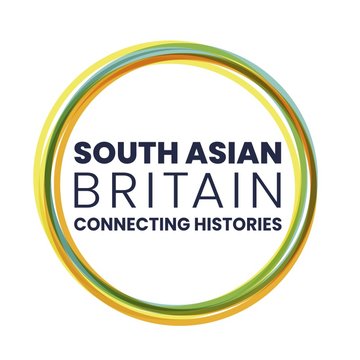
Force K6, Royal Indian Army Service Corps
‐
Indian Contingent of the Royal Indian Army Service Corps, stationed in France, evacuated at Dunkirk and northern France, and then deployed in Britain during the Second World War
Other names
The Indian Contingent
Animal Transport Companies
About
Force K6, often known as the Indian Contingent during their time in Britain, was a group of units from the Royal Indian Army Service Corps. They were initially deployed in France at the beginning of the Second World War. They specifically asked for muleteers, realizing that trucks would be too heavy for some of the terrain in France to which they would be posted as part of the British Expeditionary Force.
Initially, four animal transport companies – the 22nd, 25th, 29th and 32nd – comprising around 300 men each, with a similar number of mules, were sent, the first soldiers from India to be deployed during the Second World War. The majority of the soldiers were Muslims from Punjab. They attracted much press and publicity attention, with newsreel crews and press photographers documenting their movements to highlight the British empire’s support for Britain’s war effort. They arrived in France in December 1939, along with some 2,000 mules.
They were dispersed across France, including to Le Mans, the vicinity of Orchies and Lille, with 22nd Company initially remaining in Marseilles. In May 1940, with German advances, efforts were made to evacuate the companies. 32nd Company, whose second-in-command was John Ashdown, father of former Liberal Democrat Party leader, Paddy Ashdown, was evacuated at Dunkirk on 23 May and was subsequently stationed at Aldershot, Hampshire. 25th Company was evacuated from the beaches of Dunkirk on 28 May 1940. 29th Company embarked at Saint-Nazaire and was evacuated on 19 June. 22nd Company became prisoners of war.
Once in Britain, they found themselves the focus of much publicity. There was also a lot of attention paid to their comforts and entertainment. They were invited to the Shah Jahan Mosque in Woking, which became their official leave centre in May 1941, visited by royalty and frequenting the sights of London, such as London Zoo. The Indian Comforts Fund would regularly hold tea parties for the men on visits to London and would present warm knitted clothing to them. The men also would regularly feature in BBC broadcasts to India. The soldiers were first interviewed by Z. A. Bokhari, who had accompanied Richard Dimbleby as a war correspondent to France. From 14 April 1940 the BBC broadcast regularly on the Empire Service in Hindustani, and allowed the men to record messages to their families. Shortly after their arrival, they were dispersed across the United Kingdom. Around 200 from 25th Company were stationed in Lairg, Scotland; 29th Company moved to Doncaster. The rest of Force K6 went on to be headquartered in Ashbourne, Derbyshire, but after four months were moved to southern England, with 29th and 32nd Companies based at Bulford on Salisbury Plain and 25th Company near St Austell.
Force K6 was deployed as part of endeavours to shore up Britain’s sea defences and train soldiers in the handling of mules and horses for warfare. By mid-1942 Force K6 numbered some 3,4000 men with 3,400 animals in their care; the number peaked at 4,227. The Contingent spent an extended time at Crickhowell in Wales and also other parts of south Wales. In summer 1942 three companies were posted in Snowdonia for training. The majority of Force K6 were stationed for the last remaining eighteen months of their time in Britain in the Scottish Highlands, arriving at Dalwhinnie station in July 1942.
The majority of Force K6 left Liverpool for India on 14 January 1944, arriving in Bombay on 13 February 1944. Many of the animals they had cared for during their time in Britain would see action in Italy.
Indian Information
Bowman, Ghee, The Indian Contingent: The Forgotten Muslim Soldiers of Dunkirk (Cheltenham: The History Press, 2020)
Bowman, Ghee, Force K6, https://www.forcek6.org.uk/
Nasta, Susheila with Stadtler, Florian, Asian Britain: A Photographic History (London: Westbourne Press, 2013)
Stadtler, Florian, ‘Britain’s Forgotten Volunteers: South Asian Contributions to the Two World Wars’, in Ruvani Ranasinha with Rehana Ahmed, Sumita Mukherjee and Florian Stadtler (eds) South Asians and the Shaping of Britain, 1870–1950 (Manchester: Manchester University Press, 2012), pp. 80–135
Stadtler, Florian, ‘Home Front: Indian Soldiers and Civilians in Britain, 1939–45’, in Kaushik Roy and Gavin Rand (eds) Culture, Conflict and the Military in Colonial South Asia (Abingdon and New York: Routledge, 2018), pp. 258–76
Visram, Rozina, Asians in Britain: 400 Years of History (London, Pluto Press, 2002)
L/WS/1/355, India Office Records, Asian and African Studies Reading Room, British Library, St Pancras
WO 167/1433, Public Records Office, National Archives, Kew, UK
WO 167/1434, Public Records Office, National Archives, Kew, UK
WO 167/1436, Public Records Office, National Archives, Kew, UK
WO 167/1437, Public Records Office, National Archives, Kew, UK
WO 167/1438, Public Records Office, National Archives, Kew, UK
WO 167/1439, Public Records Office, National Archives, Kew, UK
WO 167/1440, Public Records Office, National Archives, Kew, UK
WO 179/5883, Public Records Office, National Archives, Kew, UK
WO 179/5892, Public Records Office, National Archives, Kew, UK
WO 179/5899, Public Records Office, National Archives, Kew, UK
WO 179/5900, Public Records Office, National Archives, Kew, UK
WO 179/5902, Public Records Office, National Archives, Kew, UK
WO 179/5903, Public Records Office, National Archives, Kew, UK
WO 179/5905, Public Records Office, National Archives, Kew, UK
WO 179/5906, Public Records Office, National Archives, Kew, UK
WO 179/5914, Public Records Office, National Archives, Kew, UK
WO 179/5917, Public Records Office, National Archives, Kew, UK
WO 179/5918, Public Records Office, National Archives, Kew, UK
WO 179/5919, Public Records Office, National Archives, Kew, UK
For image and copyright details, please click "More Information" in the Viewer.
Image credit
© Remaking Britain: South Asian Connections and Networks, 1930s – present
